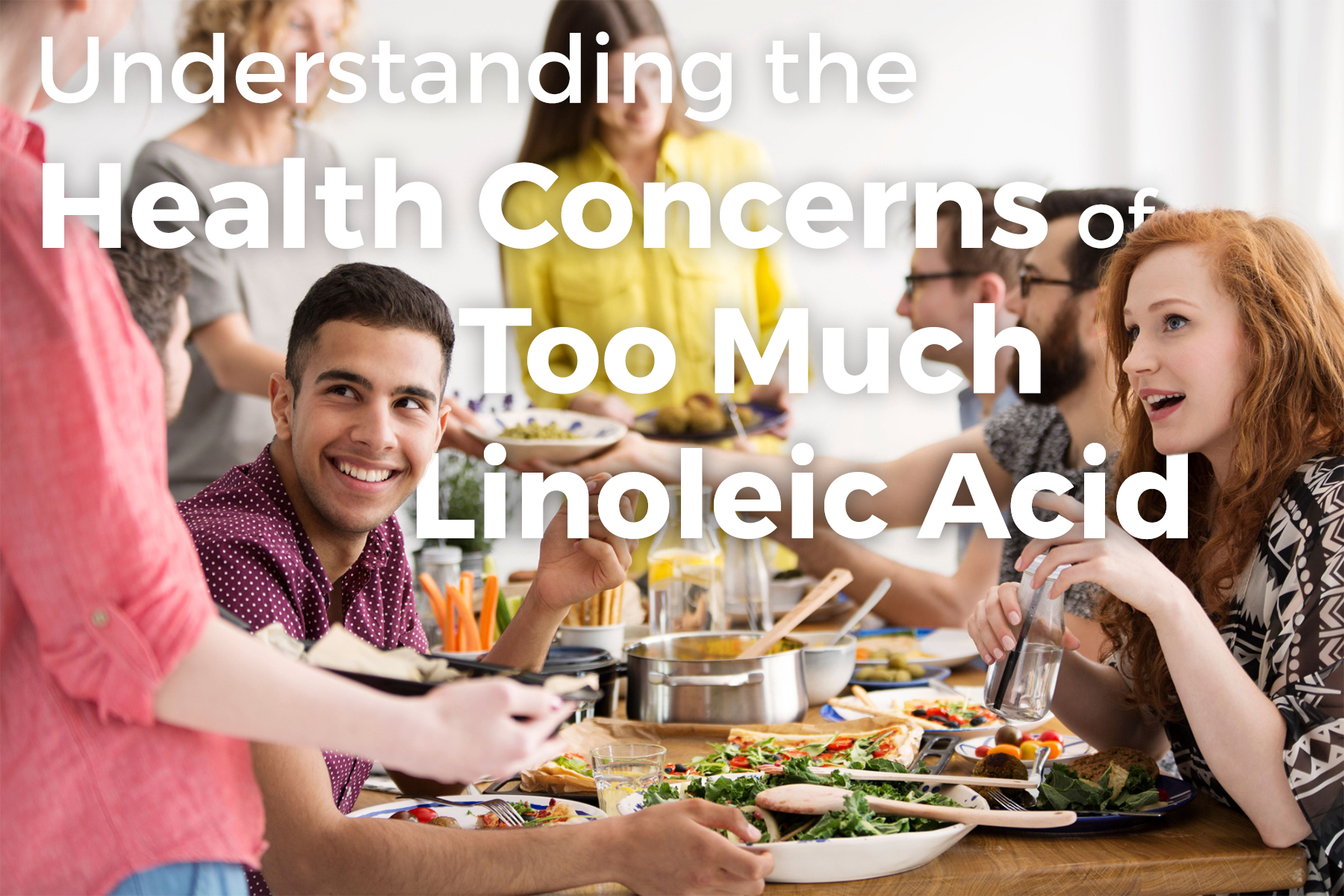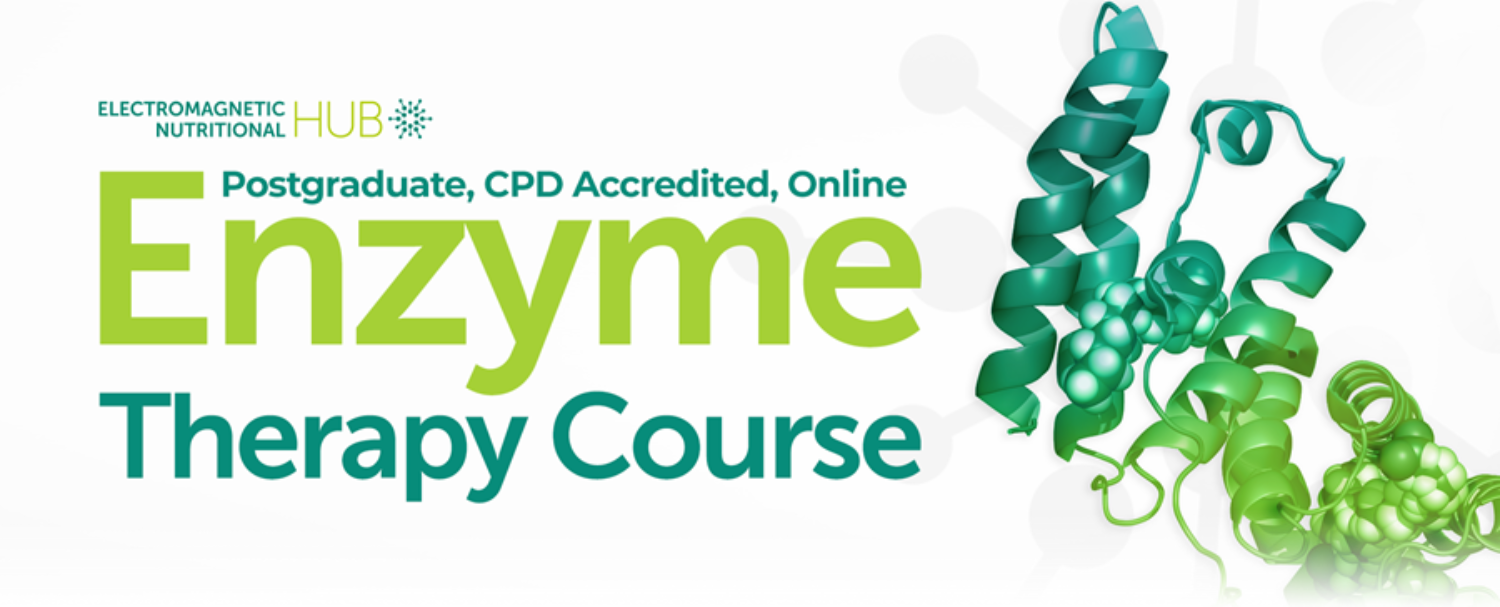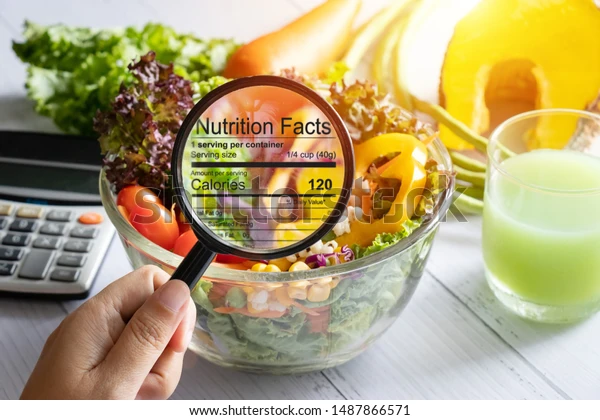With the massive push on Omega-3 and much talk of ‘healthy fats’, there are crucial aspects of this topic that are receiving little or no exposure. The concerns of too much linoleic acid and consuming excessive amounts of Omega-6 in general. Due to confusion about this subject, the very things people are turning to for healthier solutions – like olive and seed oils - could be seriously impacting their health. Misconceptions about the best ways to cook food can also be making it impossible to manage weight successfully.

This article explores the concerns associated with consuming too much linoleic acid, and how that is possible.
It is important for everyone to read, including those following vegan diets, or who feel they lead healthy lifestyles, but who cook with vegetable oils.
Before diving into this crucial topic though, one thing needs to be clarified. There is a subtle but crucially molecular-level difference between linoleic acid and conjugated linoleic acid (CLA).
CLA is an essential fatty acid, largely found in meat and dairy products. It acts as an antioxidant and provides other benefits that earn it the title ‘essential’. What we are exploring here, is the concerns associated with too much linoleic acid.
What is linoleic acid?
This is the name given to an organic compound that is also a polyunsaturated omega-6 fatty acid. Food containing linoleic acid includes vegetable oils, soybeans, nuts and seeds.
There has been extensive publicity encouraging people to replace saturated fat and carbohydrates in their diet, with foods rich in linoleic acid, to protect themselves from cardiovascular disease, and to lose weight.
According to a Harvard School of Public Health report: “linoleic acid itself plays a special role in the support of heart health. Randomised clinical trials have shown that replacing saturated fat with linoleic acid reduces total and LDL cholesterol. There is also some evidence that linoleic acid improves insulin sensitivity and blood pressure.”
Although, both CLA and linoleic acid are good sources of Omega 6, the key difference is that the studies connected to CLA do not tend to suggest that overconsumption is believed to lead to a whole new host of health problems, yet there are growing concerns surrounding the over consumption of linoleic acid.
How can you have too much Omega-6?
As referenced above linoleic acid is the main category of Omega-6 compounds. It is found in high levels of vegetable seed oils that many people use daily.
Vegetable oil created from seed crops tend to be a low-cost product to create, which is another key reason that options such as sunflower and rapeseed oils are commonly used by households and industrial food manufacturers. Soybean oil also contains a significant amount of linoleic acid.
As they are cheap to produce, of course, these same vegetable oils are used to create processed and ultra-processed foodstuffs. You will also find seed crop oils in commercial salad dressings, mayonnaise, grain-based desserts, potato and corn snacks, pizza, and pasta dishes, and of course, meals bought from takeaways.
The most widely used vegetable oil on the planet is palm oil, which is created from fruit pulp. This option does contain linoleic acid, but it is only around 10-11%. That makes sustainable palm oil a healthier option, in some regards. (The rest of the fatty acids are palmitic and oleic which make palm oil more stable, and less likely to suffer from oxidative deterioration – more on this later.)
Quite apart from the increasing reliance on seed oils high in linoleic acid, there has been a big push to encourage people to incorporate seeds and nuts into their diet.
Estimates suggest that the global market in nuts and seeds in 2023 was worth $1384bn, but by 2028 will be valued at $1775bn.
There are excellent reasons to ride this trend and secure valuable nutrition from these excellent plant proteins. The problem is that overconsumption of linoleic acid, by consuming vegetable oils, nuts, seeds and other foods containing this type of Omega-6, could potentially compromise your health.
As we discuss later, there is a body of opinion that the upward trends in inflammatory conditions and various other diseases are linked to the cell disruption properties of linoleic acid.
So just cut out vegetable oils made from seeds, right?
Concerns about overconsumption of omega-6 fatty acids have led to strong recommendations to avoid some types of vegetable oils, especially when heated, and processed/ultra-processed foods. That may well seem to be the simple solution to balancing your linoleic acid intake and is certainly a common suggestion from nutritionists.
However, that fails to factor in how present this compound is in other foodstuffs.
What other foods might be increasing your intake of linoleic acid?
A prime example is meat – especially chicken – produced from grain-fed animals, as they have absorbed linoleic acid from their feed. This also leads to commercially farmed eggs that contain a high proportion of this Omega-6 substance.
This is certainly one of the most compelling reasons to switch to meat from grass-fed animals.
What makes Omega-6 fatty acid such a concern?
Without getting too technical, a characteristic of polyunsaturated fats (PUFA) like linoleic acid is that they are missing various hydrogen atoms. This is compared to the known ‘evil’ of saturated fats, which are densely packed with multiple hydrogen atoms.
The problem is that the lack of hydrogen atoms makes PUFA like linoleic acid ‘unstable’ and prone to oxidation. This is when the fat breaks down to become small particles that interact with your metabolism, and in this case not in a positive way.
The presence of linoleic acid particles harms your metabolism, and it also slows down your body’s ability to create energy from the mitochondria in your cells.
Mitochondria - special compartments (organelles) in our cells - are present throughout our tissues. They are vital to human life, as they are responsible for chemical energy production. All the various types of fatty acids interact with your mitochondrial function in different ways. Some make it more efficient. However, omega-6 appears to be a ‘disruptor’.
What appears to happen is that the mitochondrial membrane — called cardiolipin–undergoes a chemical reaction (oxidation) that triggers a warning that something is wrong. This leads to the cell being destroyed and rebuilt.
This can also be demonstrated by Heinrich Kremer’s sixteen stages of cellular change.
As the toxins build up and become more challenging in their nature the cells start to change, through the 16 levels of cellular change outlined by Heinrich Kremer, from healthy “aerobic” cells (80% oxygen – 20% glucose), that can capture and hold light effectively, to the other extreme of the spectrum “anaerobic” cells that are (80% glucose and 20% oxygen) and are far less effective at converting light into energy, to produce ATP, (as low as 1;16th as effective) which is essential for healthy respiratory function.
So, the presence of too much linoleic acid alters the composition of cardiolipin and creates damage that may have serious health implications, including the growth of cancerous cells.
To illustrate the potential connection between linoleic acid and cancer, it has been noted to be a substance fed to animals to study cancer in pre-clinical experiments!
Contrasting with essential fatty acids, which have a positive effect on cardiolipin, including strengthening and making it more resistant to oxidative damage.
It’s about balance
A brief mention has already been made about the fact some sources of linoleic acid have other chemical compounds in them, that balance the potential harm it can do.
A good example of this is beef from animals who have been fed on grain. This would be higher in this type of Omega-6 than grass-fed herds. However, all quality beef is a source of carnosine. This is a substance that carries out various important jobs, including helping muscles to maintain proper functioning and elasticity and safeguarding against lactic acid build-up.
It is also a mitochondrial stimulant and therefore advantageous, rather than potentially obstructive to cell health.
Other overconsumption concerns
Added to the metabolic and mitochondrial impairment that linoleic acid can cause, it is also believed to stimulate inflammation and boost leukotoxin production (a substance that destroys white blood cells).
According to some health professionals, Ironically, very ill people are sometimes fed intravenously, with a nutritional product that contains soybean oil and sugar. They suggest that this could be leading to the issues mentioned above, and acute respiratory distress syndrome (ARDS).
Lastly, on the dangers of consuming vegetable oils from seed crops, there is work underway to explore a potential link between obesity and increasing consumption of linoleic acid.
In a previous article we have already discussed the fact that calories, carbs and even the most obvious sources of fat may not be the reason people struggle to control their weight. It may actually be firmly connected to poor nutritional balance that is achieved by many diets, leading to faulty metabolisms. This includes the metabolic disruption that too much linoleic acid can create.
Research on this topic
Scientific exploration of how overconsumption of linoleic acid is harmful is in its infancy.
One study discussed in the British Medical Journal (BMJ) focused on the “two-fold increase in the intake of linoleic acid” in the US. In particular, the way it gets stored for long periods in our organs’ subcutaneous adipose tissue.
It stated: “The authors of the study also noted that the increase in our linoleic paralleled the increase in the prevalence of diabetes, obesity and asthma.
This study by specialists at the Department of Preventive Cardiology at Saint Luke’s Mid America Heart Institute, also drew a line between Omega-3 (which is good for heart health) and excessive Omega-6 (which could be harmful to heart health).
It said: “The amount of linoleic acid in adipose tissue, but also in platelets, is additionally positively associated with coronary artery disease (CAD), whereas long-chain omega-3 (eicosapentaenoic acid (EPA) and docosahexaenoic acid (DHA)) levels in platelets are inversely related to CAD.”
The conclusion was “numerous lines of evidence show that the omega-6 polyunsaturated fat linoleic acid promotes oxidative stress, oxidised LDL, chronic low-grade inflammation and atherosclerosis, and is likely a major dietary culprit for causing CHD, especially when consumed in the form of industrial seed oils commonly referred to as ‘vegetable oils’.”
More on Omega-3 v Omega-6
Part of the confusion on this topic, and one of the reasons consumption of linoleic acid has increased so dramatically, is campaigning to increase the intake of Omega-3.
This is absolutely crucial. As we have discussed in previous articles, Omega-3 is an essential fatty acid that carries out vital roles. Ensuring that you get a pure source (from krill oil especially) can be a big step in protecting your cell membranes and hormone production, and in preventing heart disease and strokes.
However, not everyone realises that they need to boost omega-3 intake, without also increasing the omega-6 they ingest.
How can you control your Omega-6 intake?
As mentioned already, avoiding vegetable oils – especially when used on industrial scale from plant seeds – is important.
This does mean you can still consider sustainable palm oil, and olive oil. Both contain linoleic acid, but also deliver beneficial fat, and are less likely to oxidate.
Beyond that, it is important to avoid the risk of linoleic acid overconsumption by making sure you are eating good sources of Conjugated Linoleic Acid (CLA) instead.
This nutritionally valuable and stable compound can be found in meat and other products that have been created from grass-fed animals, or alternatively it can be supplemented as a food supplement.
According to avid campaigner Dr Mercola, CLA is a “potent ally” for combating not just cardiovascular disease, but also cancer, insulin resistance high blood pressure, high cholesterol, osteoporosis and asthma.
It may also help substantially with weight management, as: “Previous studies have shown that CLA reduces body fat while preserving muscle tissue and may also increase your metabolic rate.”
Finally, those nuts and seeds that you love, and which provide valuable nutrients as part of healthy eating, can still be enjoyed. That is, as long as you don’t also use vegetable oils or include a lot of grain-fee meat in your diet!




